
SPRING 2023 I HOLYOKEHEALTH.COM A PUBLICATION OF HOLYOKE MEDICAL CENTER
EXPERT SPINE CARE CLOSE TO HOME SLEEP PROBLEMS —SOLVED! BACK IN ACTION WITH NEW KNEES
MEET THE VALLEY HEALTH SYSTEMS EXECUTIVE TEAM


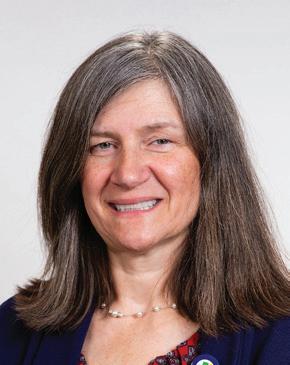





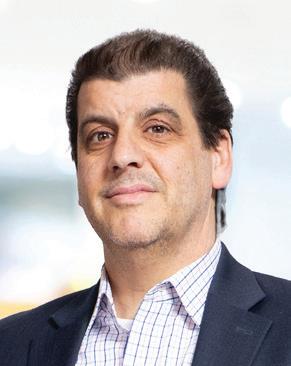
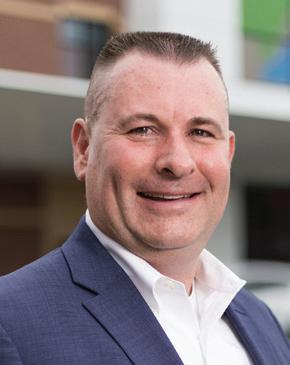

3 HEALTHY HABITS News and programs for better health.
4 BACK TO WORK WITH TWO NEW KNEES Joint replacement and physical therapy help a man return to an active life.

6 HEALING CHILDHOOD TRAUMA
8
10
A program trains communities to recognize and reduce the impact of adverse childhood experiences.
7 KEYS TO A WOMAN’S HEALTHY HEART. What you can do to help lower your risk of heart disease.
SMALL INCISIONS, BIG BENEFITS
The new Institute for Minimally Invasive Spine Surgery offers expert care.
SOLVING SERIOUS SLEEP PROBLEMS HMC opens a new Sleep Lab in Chicopee. 14
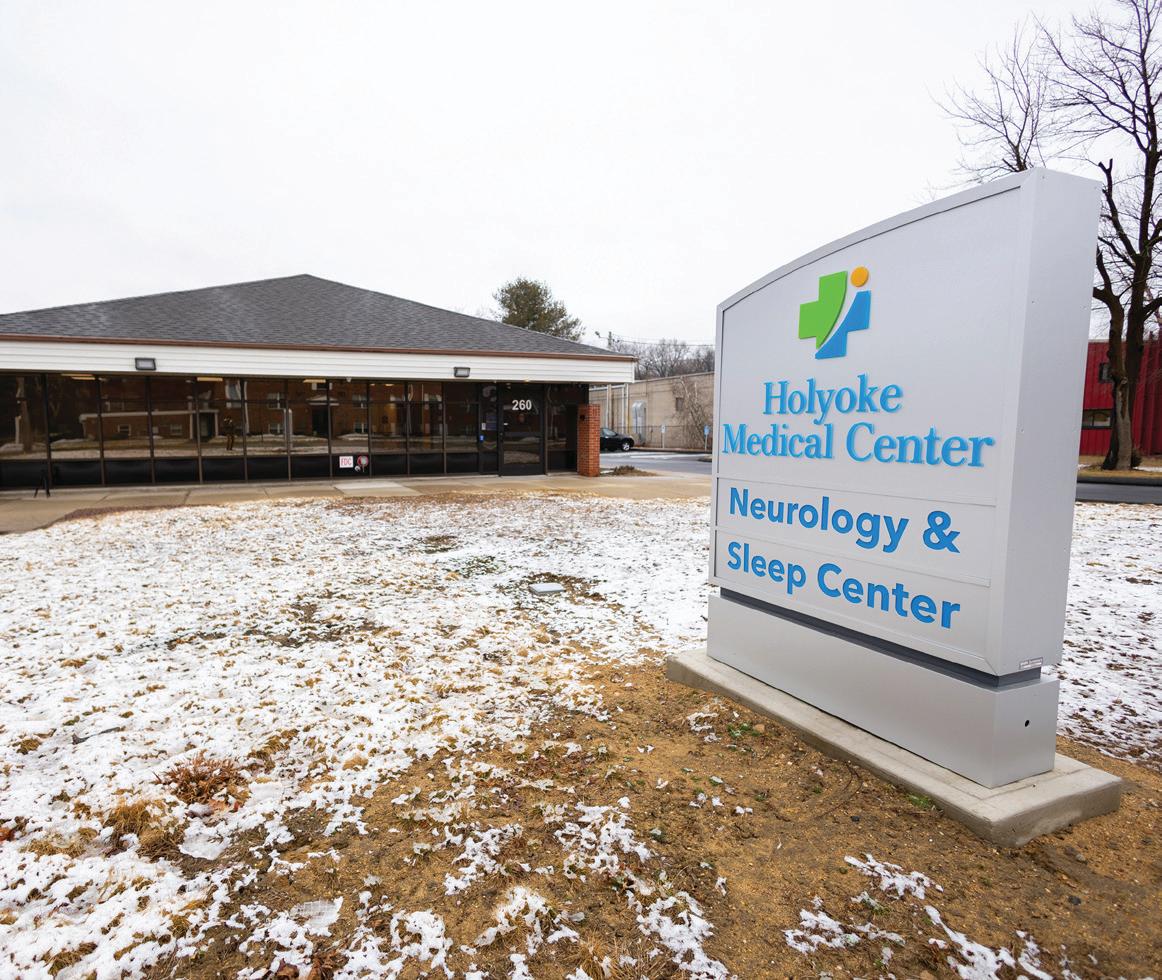
THE VALUE OF SOCKS A local man donates 3,000 pairs for people with vascular disease. 15
MAD ABOUT MANGOES Discover the “king of fruits” and its health potential.
● HOLYOKE MEDICAL CENTER 575 Beech Street, Holyoke | 413.534.2500
● HOLYOKE MEDICAL GROUP 15 Hospital Drive, Holyoke | 413.535.4800
● HOLYOKE VNA HOSPICE LIFE CARE 575 Beech Street, Holyoke | 413.534.5691
● RIVER VALLEY COUNSELING CENTER P.O. Box 791, Holyoke | 413.540.1234
12
12
the Cover: Daily workouts help Joe Deedy keep strong after two knee replacement surgeries.
On
SPIROS HATIRAS President & Chief Executive Officer
CARL CAMERON Chief Operating Officer
CONTENTS
DEAN VITARISI Chief Financial Officer
SIMON AHTARIDIS, MD, MPH Chief Medical Officer
BEVERLY FEIN Vice President, Chief Human Resources Officer
MARGARET-ANN AZZARO, DNP, RN, CENP Vice President, Patient Care Services & Chief Nursing Officer
JOE DIVER Chief Information Officer
Center
ROSEMARIE ANSEL, MSW/CHC Executive Director, River Valley Counseling
APRIL BARTLEY, RN, MSN, NE-BC Executive Director, Holyoke VNA Hospice Life Care
AVADHOOT GOKHALE Vice President, Chief Quality Officer
2 SPRING 2023
MARCEL MONIZ Vice President, Ambulatory Operations
HEALTHY HABITS SHOOT
WELLNESS EVENTS
FOR YOU AND YOUR FAMILY
FOR MORE SHUT-EYE
Studies support the advice that seven hours of sleep per night is a healthy amount for folks ages 50 and older. Research found that snoozing less—five hours, for example— was linked to a 20% greater risk of developing a chronic condition.
 —PLOS Medicine
—PLOS Medicine
WEIGHT MANAGEMENT INFORMATION SESSIONS
Learn about surgical options offered at Holyoke Medical Center (HMC) for weight loss as well as a new gastric balloon now available in a self-pay procedure at the hospital. Join Martin Walko, MD, as he reviews the comprehensive and multidisciplinary team approach that helps make the HMC Weight Management Program one of the safest, highest-quality and most effective programs available. Our program has helped members of our community lose thousands of pounds and keep them off!

Bilingual English and Spanish programs:
• Monday, April 10, at 2:45 p.m.
• Monday, May 8, at 2:45 p.m.
• Monday, June 5, at 2:45 p.m.
WHAT’S THAT?
Hearing loss in midlife is associated with an increased risk of dementia, according to research. Meanwhile, not being able to communicate can lead to loneliness and depression.

—The Lancet
140,000,000
The number of Americans who have had the coronavirus, based on an analysis of blood tests that reveal antibodies from the infection. Centers for Disease Control and Prevention
EXERCISE POST-CANCER
Research suggests that staying active could curb certain cancers. In one recent study, prostate cancer patients who enrolled in a 12-week exercise regimen were found to have suppressed the growth of new cancer cells.

—Medicine & Science in Sports & Exercise
English programs:
• Wednesday, April 26, at 5:30 p.m.
• Wednesday, May 17, at 5:30 p.m.
• Wednesday, June 21, at 5:30 p.m.
All programs will take place in the HMC Auxiliary Conference Center at 20 Hospital Drive, Holyoke, MA. To register, visit www.holyokehealth.com/info or call 413.534.2789
To learn more, scan this QR code
VALLEY HEALTH & LIFE 3
BACK TO WORK WITH TWO NEW KNEES
THANKS TO TWO KNEE REPLACEMENTS, AN ICECREAM ENTREPRENEUR AND AMATEUR DRAG RACER IS BACK TO HIS ACTIVE LIFESTYLE.
JOE DEEDY doesn’t take time off. “I’ve worked seven days a week my whole life,” says the 57-year-old owner of Moolicious Farm in Southwick, a restaurant and manufacturer of 75 flavors of ice cream sold in local stores and at fairs like The Big E. A career that required Joe to spend a lot of time kneeling on cement coupled with high school sports injuries had taken a toll on his knees. “I’m 5’6” and weighed 300 pounds,” he says of the excess weight that was further stressing his joints. Three years ago, while fixing machinery, Joe found himself unable to get up off the floor because of knee pain and weakness. He knew he needed help. His primary care doctor referred him to CORE Physical Therapy in Westfield.
OVERCOMING OBSTACLES
Throughout the care journey that followed, providers at Holyoke Medical Center (HMC) empowered Joe to live his best life at every step. Sara Brown, PT, of CORE, says Joe was in pain and at risk of falling due to his weak


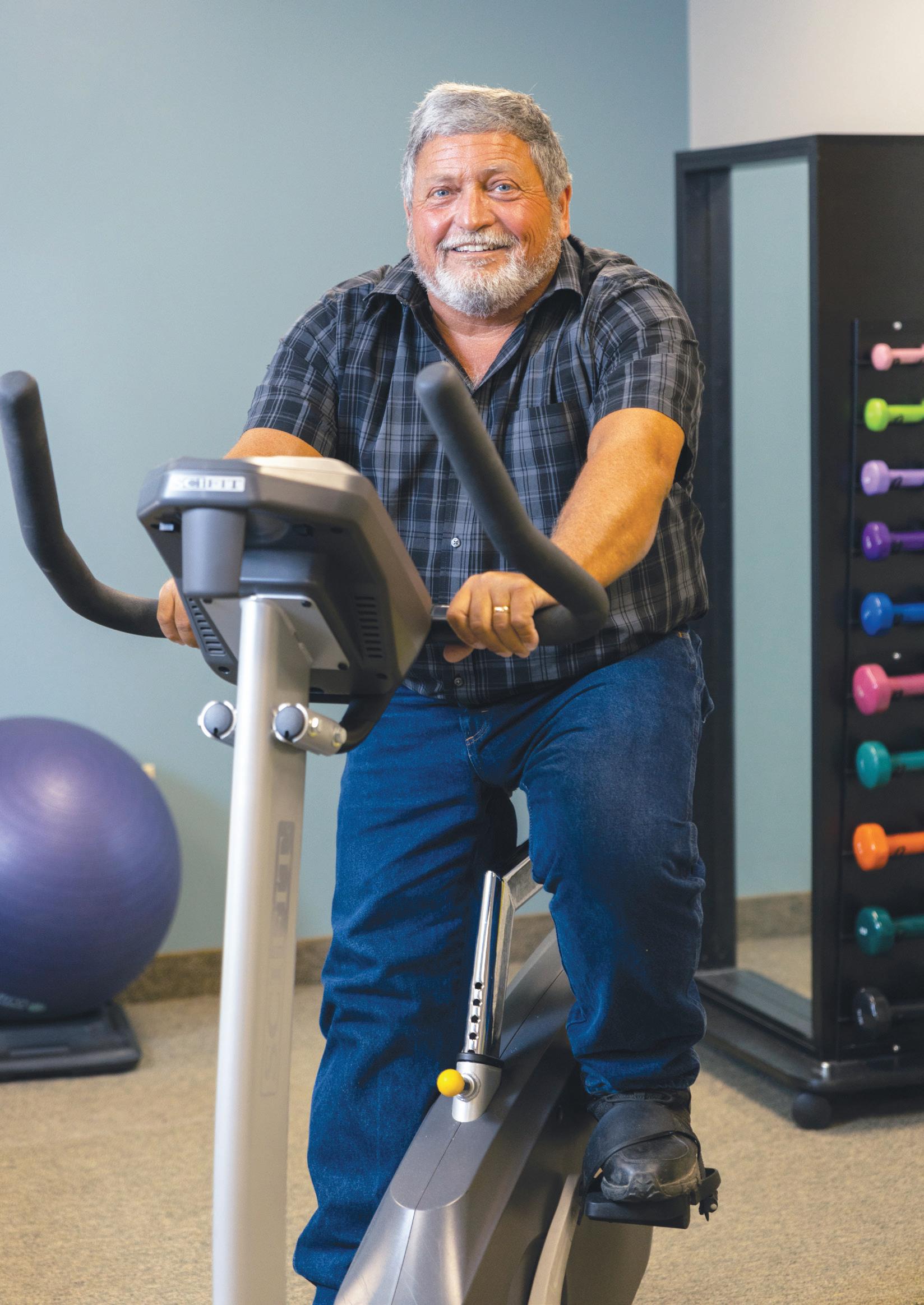 Noah Epstein, MD Sara Brown, PT
Noah Epstein, MD Sara Brown, PT
4 SPRING 2023
Physical therapy, exercise and healthier food choices have helped Joe Deedy get the most out of knee replacement surgeries.
legs and poor mobility. Together they worked on exercises to improve knee and hip strength and movement, but it became clear that more intervention was necessary. Noah Epstein, MD, an orthopedic surgeon with the Orthopedic Center at HMC, diagnosed Joe with bilateral knee osteoarthritis and recommended two total knee replacements.
“He’s a straight shooter,” Joe says of Dr. Epstein. Wanting to ensure the highestquality outcome and greatest degree of safety possible, Dr. Epstein advised Joe to first lose 40 pounds. Dr. Epstein also recommended that Joe get his Type 2 diabetes under better control because high blood sugar can increase the risk of complications during and after surgery.
Never one to shy away from a challenge, Joe began making healthier food choices and losing weight. With support from Caroline White, RN, BSN—the Orthopedic Center’s nurse navigator—and prehabilitation (therapy that helps patients get into better shape prior to surgery) at CORE, Joe was ready for his first knee surgery in November 2021.
Joe arrived for his procedure at HMC wearing a Hawaiian print shirt. “It was my first time having a day off!” he laughs. Dr. Epstein says arthroplasty surgery to remove Joe’s damaged right knee and replace it with an artificial joint went well. “Joe had a great attitude and made an excellent recovery,” says Dr. Epstein, who performed Joe’s second knee replacement one year later.
PERSONALIZED CARE
As Joe’s physical therapist, Brown commends his hard-won success. “Joe’s positive mindset and determination set him apart,” she says. Patients can become discouraged at different stages of their rehabilitation. Some individuals struggle with the amount of dedication required both pre-surgery and during post-surgery recovery. Joe, however, was determined to regain his active lifestyle and committed himself to making his surgeries successful. “Joe
never gave up,” Brown says.
Brown says CORE individualizes every treatment plan. In Joe’s case, this meant planning around his busy schedule. “Joe set a goal of returning to his work life quicker than the average patient, so he committed to more frequent therapy sessions,” says Brown. “He had to build up strength and endurance. Joe rose to every challenge and met his therapy benchmarks.”
Personal goals drive therapy goals at HMC, says Brown. Joe, a husband, father and grandfather, had several objectives in addition to returning to work: He wanted to participate more fully in family activities, resume his philanthropy role with the Southwick Civic Fund and get back to his passion for drag racing. “The cars we race can reach speeds up to 200 miles an hour,” he says. Now he can easily climb in and out of his race car. “That’s hard to do when you’re overweight and have bad knees,” he says.
“I’m a different person today than I was three years ago,” Joe continues. Prior to having his knees replaced, he says that any movement—from climbing stairs to getting up and down from a chair—caused pain and required tremendous effort. “I’m a handson employer, but by 3 p.m., I was exhausted,” he recalls. Today, Joe is down 40 pounds thanks to thoughtful nutrition and a daily two-hour gym regimen. He also bought an electric bicycle and often pedals 40 miles when weather permits.
He credits his HMC team with turning his life around. He calls Dr. Epstein “a rock star” and his nurse navigator, Caroline White, “my biggest advocate.” Joe’s long relationship with CORE continues as he integrates Brown’s fitness advice into his early-morning workouts.
Recently, Joe delivered 40 meals as a thank-you to the inpatient unit. “My experience at HMC was a win-win,” he says. “I can’t say enough about the staff. Those people are great at what they do and always have a smile and a kind word. That means a lot.”
YOUR CORE TEAM
If you’re considering joint replacement surgery, physical therapists at CORE will be by your side every step of the way. “CORE PT is an essential part of ensuring that our patients recover quickly and have a good outcome,” says orthopedic surgeon Noah Epstein, MD, of the Orthopedic Center at Holyoke Medical Center. “They educate patients about the principles underlying recovery from joint replacement and work with them on the essential exercises to optimize range of motion and strength.”
For a physical therapy program that meets your needs and schedule, contact CORE at one of three convenient locations:
Holyoke Medical Center 575 Beech Street Holyoke, MA 01040
413.534.2555
CORE Physical Therapy in Chicopee 1970 Memorial Drive Chicopee, MA 01020
413.535.4991
CORE Physical Therapy in Westfield 140 Southampton Road Westfield, MA 01085
413.535.4996
at 413.536.5814 .
VALLEY HEALTH & LIFE 5
The HMC Orthopedic Center is located at 10 Hospital Drive, Suite 203, Holyoke, and can be reached
HEALING CHILDHOOD TRAUMA
A NEW PROGRAM TRAINS COMMUNITIES TO RECOGNIZE ADVERSE CHILDHOOD EXPERIENCES AND REDUCE THEIR LONG-TERM EFFECTS.

6 SPRING 2023
ADVERSE EXPERIENCES in childhood
are common across all demographics and contribute to every major chronic illness and social problem in the United States, according to a 1990s study by researchers from the Centers for Disease Control and Prevention and Kaiser Permanente.
The study found that people who suffer adversities as a child have seven times the risk of becoming an adult alcoholic, 12 times the risk of attempted suicide and twice the risk of developing cancer and heart disease.
Elaine Campbell, Psy.D., Assistant Executive Director/Clinical Director of River Valley Counseling Center (RVCC), hopes to disrupt the destructive, progressive nature of adverse childhood experiences (ACEs). Last year, she coordinated the training of 32 education professionals from Holyoke Public Schools and nurses and mental health staff from RVCC about how to recognize ACEs—traumatic or stressful experiences of abuse, neglect and household dysfunction—and how to respond to them. “ACE training is a step toward achieving the goal of becoming a trauma-informed system of care,” Dr. Campbell says.
TRAUMA’S IMPACT
Dr. Campbell explains that ACEs are common throughout society, adversely affecting childhood development and complicating mental and physical health later in life. “Some may think trauma affects only ‘those people,’ but the reality is that stressors like divorce, substance use and unemployment know no bounds. Research shows that if a young child is
going through a traumatic experience, their whole development is impacted,” says Dr. Campbell, noting that the old “pull yourself up by your bootstraps” approach doesn’t work. “ACEs are embedded in a child’s biology.”
The COVID-19 pandemic was a time rife with stress. It led to feelings of grief caused by the loss of a loved one, economic pressure due to job losses and the challenges of children being out of school with parents working from home and acting as de facto teachers. These stressors resulted in mental health issues like anxiety and depression, sleep and concentration problems and feelings of anger and sadness. For a child already impacted by ACEs, the pandemic exacerbated emotional instability and physical health issues. “Stress doesn’t just affect one part of us, it affects all of us,” says Dr. Campbell of the mind-body connection.
PARTNERING WITH SCHOOLS
The takeaway, Dr. Campbell says, is that the health impact of ACEs needs to be recognized as a public health issue. “ACEs affect more of us than not. If we realize that, we can do something about it,” she says.

RVCC has done just that, applying for and being awarded a $100,000 grant from the City of Holyoke to begin to address the issue. Using funds from that grant, the Center partnered with Holyoke Public Schools to get “boots on the ground” in all schools. “Our goal is to train multiple and varied school staffers so we can build up resilience and selfhealing in the community and reduce ACEs in the next generation,” says Dr. Campbell.
Giselle M. Rojas, MSW, Director of Student Support Services and District 504 Coordinator for Holyoke Public Schools, participated in two days of virtual training along with 13 school adjustment counselors. Having earned the designation “master trainers,” they’re now able to share what they learned with teachers, paraprofessionals and other

school personnel.
Training was led by Laura Porter and Robert Anda, MD, co-founders of ACE Interface. Dr. Anda was a leader of the original ACE study tracking the effects of childhood trauma on health throughout the lifespan of 17,000 patients. The ACE study is being replicated in numerous countries by the World Health Organization.
“Being aware of the link between ACEs and many of our society’s medical and social problems allows us to think proactively about prevention and mitigation,” says Rojas. “Our efforts focus on mitigating children’s exposure to adverse situations while increasing opportunities for the development of resilience and sense of agency in our community.”
Mindful of the pressures school staff are under post-pandemic, Dr. Campbell says training included resources in classroom management and self-care. “If you’re stressed and overly anxious, the frontal lobe of the brain goes offline. It’s hard to meet someone with empathy and respect when your frontal lobe is dysregulated.”
HELPING HOLYOKE HEAL
Dr. Campbell also has trained department managers at Holyoke Medical Center to educate their staff about ACEs, making HMC the first Massachusetts medical center to become a trauma-informed agency. She hopes that ACE training continues to spread throughout the community.
“By training people such as teachers, childcare workers, first responders, religious leaders and others to recognize and respond to adverse childhood experiences, we can reconnect as a society and restore the health and resiliency of our community,” Dr. Campbell says. “Every positive interaction can reduce further traumatization. When a child is approached with compassion and understanding versus judgment, you stand a better chance of helping that child heal.”
Those interested in learning more about being trained in mitigation of adverse childhood experiences can contact Dr. Elaine Campbell at campbell_elaine@holyokehealth.com .
VALLEY HEALTH & LIFE 7
Elaine Campbell, Psy.D. Giselle M. Rojas, MSW
7
KEYS TO A WOMAN’S HEALTHY HEART
HERE’S WHAT YOU CAN DO TO HELP LOWER YOUR RISK OF HEART DISEASE.

8 SPRING 2023
HEART DISEASE, the leading cause of death for women in the United States, can be insidious, creeping up slowly and seemingly without warning. Often it can be “silent,” too, with no obvious symptoms at all until a crisis or emergency, like a heart attack, strikes.
“Women must pay attention to changes in how they feel, especially new-onset shortness of breath, chest area discomfort or decreased activity tolerance,” says Dawn Chartier, FNP, at Holyoke Medical Center (HMC) Cardiovascular Specialists. “Women can have atypical symptoms. Any new symptoms should be discussed with a healthcare provider.”

WARNING SIGNS OF HEART ATTACK IN WOMEN
Dawn Chartier, FNP
Here are seven things women can do to help prevent or reduce their risk of heart disease:

1. MONITOR YOUR BLOOD PRESSURE. “Having elevated blood pressure can directly affect the heart,” Chartier says. “The heart can enlarge and weaken over time if blood pressure is not controlled. Ideal blood pressure is 130/85, and borderline hypertension is 140/90.”
2. EAT A HEART-HEALTHY DIET. Reduce sugar and salt; eat a diet that contains whole grains, lean proteins and fruits and vegetables; and avoid saturated fats and cholesterol. A Mediterranean diet is a healthy option to consider.
3. AVOID OVEREATING. In addition to causing weight gain, eating heavy meals and large portions causes your body to work overtime and increases your heart rate. Fatty meals are particularly taxing.
4. EXERCISE. Take a walk, ride a bike, swim, dance—just get moving, and aim for at least a half hour of moderate exercise per day, incorporating strength training twice a week.
“Exercise is essential for overall good health,” Chartier says. “It helps with weight loss/control, lowers blood pressure, improves oxygenation to muscles and can decrease emotional stress.”
5. QUIT SMOKING. Just do it. After one year, your risk of developing heart disease will be cut by 50%.
6. MANAGE STRESS. Stress can have a profound effect on your heart health by inducing the release of stress hormones such as cortisol and adrenaline, which in turn cause an increase in blood pressure and injury to the inner layer of your heart vessels (endothelium), leading to a heart attack. Yoga and meditation are just two things that can help you manage stress. Speak to your provider about other options.
7. SLEEP WELL. Sleep is important but it’s not just about getting enough sleep, which for most adults is about seven to nine hours per night. Getting enough restful, restorative sleep is what matters. Go to bed at about the same time every night; sleep in a cool, dark room; and turn off electronic devices like cell phones and tablets.
Though there is some overlap in the symptoms of heart attack in women and men, women have some different symptoms, many of which can be subtle or may be attributed to just aches and pains, the flu or heartburn. But if you think you’re having a heart attack, call 911:
• Jaw, neck or upper back pain
• Chest pain
• Chest tightness
• Pain in the shoulder or arm
• Nausea or vomiting
• Dizziness or fainting
• Cold sweats
• Shortness of breath
• Pain or pressure in the lower chest or upper abdomen
• Indigestion
HMC Cardiovascular Specialists is located at 11 Hospital Drive, 3rd Floor, in Holyoke. To learn more or make an appointment, call 413.534.2870 .
VALLEY HEALTH & LIFE 9
SMALL INCISIONS, BIG BENEFITS
THE NEW INSTITUTE FOR MINIMALLY INVASIVE SPINE SURGERY OFFERS ADVANCED CARE.

FREDERIK PENNINGS, MD, PHD, internationally recognized expert in minimally invasive spine surgery, knows from personal experience how disruptive back pain can be. “The good news is that 90 percent of symptoms resolve on their own, as they did for me,” he says. “But when they don’t, many spinal conditions can significantly limit daily activities.” Surgery may be needed to
restore function—and Dr. Pennings is ideally qualified to provide it.
The only spine fellowship-trained neurosurgeon in the area, Dr. Pennings has more than 25 years of training and experience in neurosurgery, with a background that includes multifaceted training, various leadership positions, professional recognition, clinical education, technology development and published research.
Dr. Pennings is very familiar with the healthcare environment in central and western Massachusetts: He built a successful minimally invasive spine program at UMass Memorial Medical Center, then transferred to the Springfield area in 2018 to establish the Minimally Invasive Spine Center of New England and serve as Chief of Neurosurgery at Mercy Medical Center.

Dr. Pennings now leads the new Institute for Minimally Invasive Spine Surgery at Holyoke Medical Center (HMC), where he’ll perform advanced procedures that can help relieve many potentially debilitating conditions. In addition to serving residents of Holyoke and the surrounding area, Dr. Pennings will continue to serve the community of western Massachusetts and the Springfield area and welcomes his current and past patients to see him at his new Holyoke location.
“Opening the Institute for Minimally Invasive Spine Surgery ensures that HMC is prepared for the shift in delivery of complex spine care from inpatient to outpatient services by offering innovative spine surgeries close to home,” Dr. Pennings says. “We’re an experienced spine surgery
 Frederik Pennings, MD, PhD
Frederik Pennings, MD, PhD
10 SPRING 2023
Michael Bennett, PA-C
team and can tailor treatments to patients’ needs.”
A LESS TRAUMATIC APPROACH
Because he’s adept in both traditional open spine surgery and minimally invasive techniques, Dr. Pennings can perform whatever procedure is best given a patient’s unique condition and circumstances. But minimally invasive options generally offer important advantages over traditional procedures, he says.
“Minimally invasive spine surgery approaches the spine through much smaller incisions than in an open procedure,” he explains. “Surgery is less traumatic to tissues, so most patients recover more quickly, with less blood loss and lower risk of infection.”
Most minimally invasive spine procedures can be done on an outpatient basis or at most entail a short hospital stay. “With some traditional surgeries, a patient might spend many days in the hospital,” Dr. Pennings says.

What’s more, patients who might not be candidates for more invasive procedures due to their weight or age can often benefit from minimally invasive surgery. “It’s not uncommon for Dr. Pennings to help people whom other surgeons have turned away,” says Michael Bennett, PA-C, a neurosurgery physician assistant who has been part of Dr. Pennings’ team for 13 years. “He has a very broad set of skills and can take on most problems of the spine, lower back and neck.”
One recent patient had been told repeatedly that his weight created insurmountable barriers to surgery and had given up hope of relief from spinal pain. “When Dr. Pennings told him he has techniques to make surgery not only possible but also doable in a way to minimize trauma and expedite recovery, this gentleman broke down in tears,” Bennett says. “We’ve had many cases like that.”
A CONTINUUM OF CARE
The advantages of minimally invasive surgery apply to a range of conditions that generally involve degeneration of the spine, Dr. Pennings says. Common conditions that may warrant surgery include:
• Spinal stenosis, a condition in which the spinal canal (which runs through the spine’s stack of bony segments called vertebrae) becomes narrowed and puts pressure on nerves in the spinal cord
• Scoliosis, a sideways curving of the spine
• Lumbar spondylolisthesis, in which a vertebra of the lower back slips forward in relation to neighboring vertebrae
• Disc herniation, in which the jellylike center of a rubbery disc that cushions the space between two vertebrae squeezes out and can press on nerves
“A minimally invasive approach can
be especially advantageous in bigger surgeries,” Dr. Pennings says. Fixing degenerative scoliosis, for example, involves a procedure that straightens and fuses multiple levels of the spine. “An open procedure might require an hours-long procedure through large incisions, but a minimally invasive procedure is done in a much shorter time frame through an incision of 1 to 2 cm, or less than an inch,” he says. “That’s a big difference.”
Dr. Pennings and his team have adopted the latest approaches for postoperative care and recovery as well, using concepts collectively known as enhanced recovery after surgery (ERAS). Key ERAS protocols include engaging in activity such as walking soon after surgery and using alternatives to narcotics for post-op pain management.
“We’re also working toward doing awake surgery in which patients don’t receive general anesthesia but are sedated and later supplied with pain medication,” Dr. Pennings says. “It’s an innovative approach that evidence suggests leads to even quicker recovery and less narcotic use.”
Such approaches are part of a broader shift toward patient-centered, evidencebased, multidisciplinary care in which a surgical procedure is just one step along a continuum. Treatment begins with conservative measures such as physical therapy, pain medications and steroid injections. Surgery may be considered if other approaches fail or if symptoms such as severe pain or neurologic deficits like numbness or tingling indicate a potentially serious problem.
“Many teams necessary for tailored spine care are already in place at HMC, such as pain management, patient education, anesthesiology, nursing, physical therapy, physiatry and rehabilitation,” Dr. Pennings says.
The goal is to take whatever steps are best suited to relieve pain and restore function. “It’s very gratifying to take somebody’s pain away so they can engage in normal activities,” Dr. Pennings says. “People say to me, ‘You gave me my life back.'”
The
new Institute for Minimally Invasive Spine Surgery at Holyoke Medical Center is located at 10 Hospital Drive, Suite 101, Holyoke. To learn more or make an appointment, call 413.535.4860 .
It’s very gratifying to take somebody’s pain away so they can engage in normal activities.
VALLEY HEALTH & LIFE 11
- Frederik Pennings, MD, PhD
SOLVING SERIOUS SLEEP PROBLEMS
A COMFORTABLE NEW SLEEP LAB IN CHICOPEE HELPS IDENTIFY AND TREAT SLEEP DISORDERS.
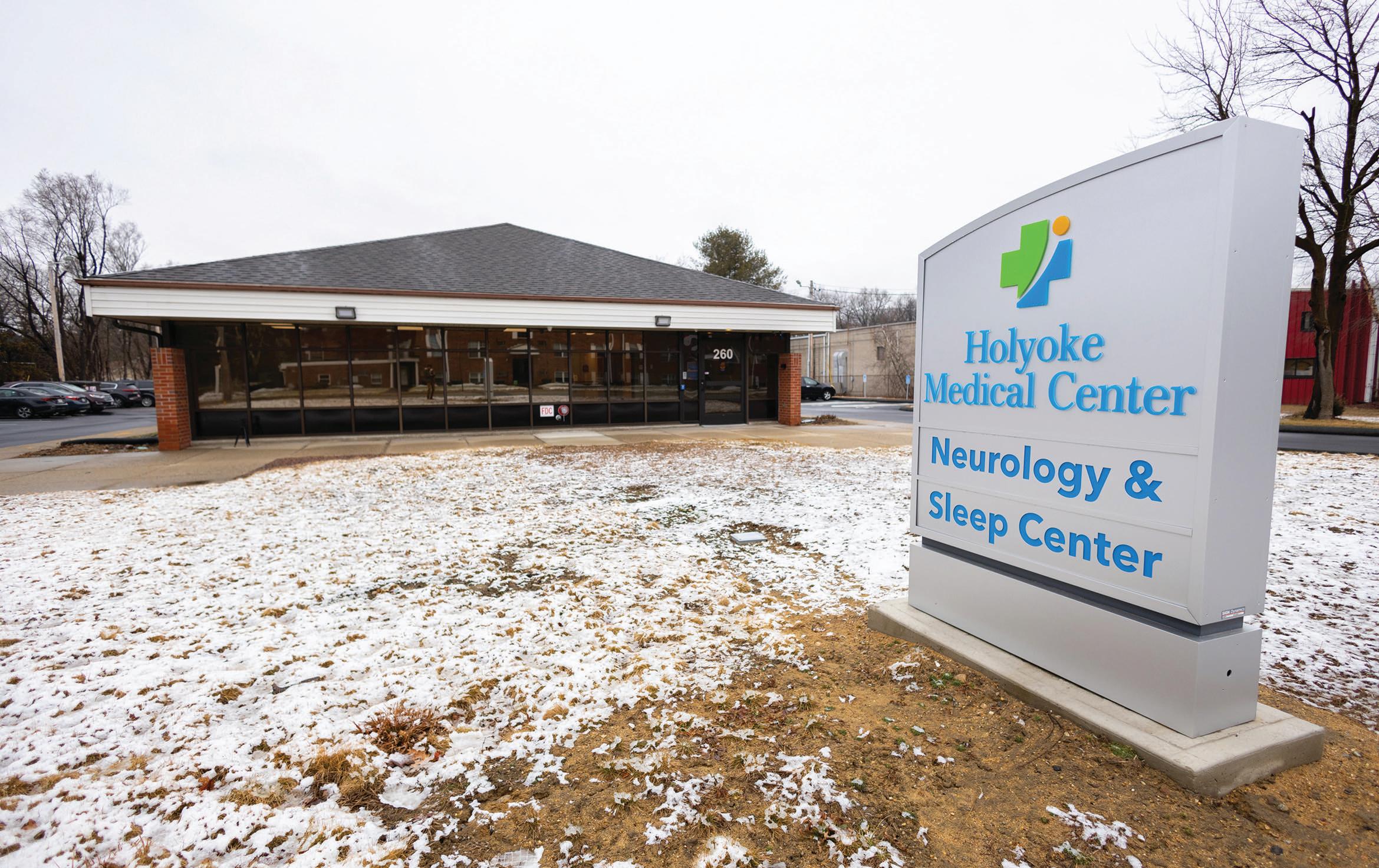
GETTING ENOUGH sleep is necessary for good health. Yet over 30% of adults in the United States sleep less than the recommended amount. Lack of sleep can increase a person’s risk of health conditions such as heart disease, depression, obesity and Type 2 diabetes, and is linked with accidents and injuries. The good news is that sleep disorders such as insomnia and sleep apnea can be diagnosed and treated, bringing relief and renewed health to those who struggle with slumber.
Sleep studies are a vital diagnostic tool for many sleep disorders, according
to neurologist and sleep specialist Rani Athreya, MD, Medical Director of Sleep Medicine at Holyoke Medical Center (HMC) and its newly opened Sleep Lab in Chicopee. “We are an accredited sleep center by the American Academy of Sleep Medicine,” says Dr. Athreya of the overnight sleep-study facility at 260 New Ludlow Road, which replaces the lab previously on-site at HMC.

A RESTFUL SETTING
Robert Castor, BS, RRT, a respiratory therapist who manages the HMC Sleep Lab, says the new Chicopee location offers a secure and relaxing environment that makes it easy for patients to fall asleep and stay asleep. Castor worked closely with Sleep Lab supervisor Robert Sachen, RPSGT, a registered

polysomnographic technologist, and HMC’s Purchasing Department to select equipment and furnishings that both met Department of Public Health standards and created a welcoming atmosphere.

“The process was like opening a small hotel,” Castor says. “We designed our suites with patient comfort in mind.” The Sleep Lab features four one-bedroom units, each with its own private bathroom and shower. This includes a room specific for the bariatric patient population. “Beds are adjustable for sleep comfort and ambulatory challenges, and have hotel-style comforters and pillows,” Castor says. “Every room has its own temperature control for heating and air conditioning.”
The Sleep Lab has a dedicated suite for people with obesity because they are more likely to experience sleep concerns such as sleep apnea and gastroesophageal reflux disease (GERD). The suite’s room entryways are larger, and beds and bathrooms are more
RANI ATHREYA, MD ROBERT CASTOR, BS, RRT
12 SPRING 2023
ROBERT SACHEN, RPSGT
expansive. “It makes for a comfortable and positive sleep-study experience for all patients,” says Sachen.
Sachen says patients arrive at the Sleep Lab at 7:30 p.m. for an overnight test that finishes at 6:30 a.m. They are greeted at the door by Jane Ortega Silva, RPSGT, RPT, lead sleep technologist and respiratory therapist. “Jane runs the evening sleep studies,” says Sachen. “She’s also a valuable resource to our Spanish-speaking community, explaining the procedure in advance and communicating on test night.”
DIAGNOSIS AND TREATMENT
HMC has a holistic approach, working across specialties when identifying people who could benefit from a sleep study, and has designed the new sleep lab for the comfort of all patients. For example, the Weight Management Program, under the medical direction of Yannis Raftopoulos, MD, collaborates with Dr. Athreya and the Sleep Lab team to help bariatric surgery patients who have sleep concerns.
While patients sleep, trained technologists use state-of-the-art equipment to monitor sleep patterns

by tracking brain waves, heart rate, breathing and oxygen levels in a process called polysomnography. “We also do multiple sleep latency tests (MSLT) to evaluate for narcolepsy or excessive daytime sleepiness,” says Dr. Athreya. “The study is done during the day following an overnight polysomnogram. A patient is given four to five opportunities to sleep, and sleep is recorded. This helps us determine if the patient has narcolepsy/hypersomnia or is a normal sleeper.” Dr. Athreya and her team use study findings to diagnose sleep disorders and determine treatments.
Solutions depend on the cause. Patients with sleep apnea may be prescribed a continuous positive airway pressure (CPAP) device that keeps the airway open during sleep. Those with sleep apnea or excessive snoring might undergo uvulopalatopharyngoplasty (UPPP)—surgery to remove tissue from the back of the throat. “If the cause is dental, patients will be referred to a sleep dentist for a customized oral mouth guard,” says Dr. Athreya. “For some patients with obstructive sleep apnea, new technology like Inspire—an implanted upper airway stimulation
DO YOU HAVE A SLEEP DISORDER?
People can have many types of sleep disorders, including:
• INSOMNIA, or the inability to fall or stay asleep
• OBSTRUCTIVE SLEEP
APNEA, in which breathing repeatedly stops and starts during slumber
• PARASOMNIAS such as sleepwalking, sleep terrors and dream-enacting behaviors
• RESTLESS LEG SYNDROME, an irresistible urge to move your legs
• HYPERSOMNIA, when you feel excessively sleepy during the day, often despite sleeping at night; narcolepsy is one form
Sleep disorder symptoms vary depending on the underlying cause and can include:
• Difficulty falling and staying asleep
• Witnessed episodes of sleep apnea
• Gasping arousals from sleep
• Snoring
• Waking up with headaches
• Waking up with a cough or acid reflux
• Excessive daytime sleepiness or fatigue
• Abnormal dreams
• Abnormal behavior in sleep
• Uncontrolled high blood pressure
• Memory loss
• Sudden falls
• Hallucinations
• Headaches
• Weight gain
treatment—may be a good option.” Lifestyle changes such as losing weight, adjusting sleep schedules and limiting caffeine and alcohol can also help restore sleep patterns that promote better health.
The new HMC Sleep Lab is located at 260 New Ludlow Road, Chicopee. To learn more about sleep studies or to make an appointment, call 413.534.2557 .
VALLEY HEALTH & LIFE 13
HMC’s new Sleep Lab facilities in Chicopee are designed to make falling and staying asleep easy during overnight studies with amenities such as adjustable beds outfitted with hotel-style comforters and pillows, and one suite (out of a total of four) specially equipped for patients with obesity.
THE VALUE OF SOCKS
SOCKS MAY NOT seem like essential healthcare equipment. But for patients with peripheral artery disease (PAD), a condition in which blockages reduce blood flow, especially to the legs and feet, clean socks are a constant need. When Springfield resident Bob Charland heard that the Holyoke Medical Center (HMC) Vascular Center was seeking socks, he knew he could help. Then he learned how important socks are to people with PAD— and wanted to help even more.
Known as “Bob the Bike Man,” Bob is the founder of a nonprofit called Pedal Thru Youth, which refurbishes or customizes bicycles and donates them to disadvantaged families in partnership with law enforcement agencies, schools and charitable organizations. Bob also coordinates an initiative that donates backpacks filled with essentials like winter clothing, blankets, food and socks to homeless children and adults.
“I was a deputy with the Hampden County Sherriff’s Department, so I’m partly trying to show the positive side
of law enforcement,” Bob says. He’s been engaged with community activities for 20 years but founded Pedal Thru Youth in 2017 after being diagnosed with a neurodegenerative disease. “Now everything I do is about helping people who are less fortunate,” he says.
AN ONGOING EFFORT
HMC’s sock drive began with a patient named Stephen Kubic, who died in 2018 at age 66. Inadequate blood supply caused by PAD can lead to wounds and severe infections that are difficult to heal. During his battle with the disease, Stephen had to have his right leg and part of his left foot amputated due to those complications.


Stephen’s socks were often wet and stained with blood and fluid from open wounds, recalls his daughter, Sarah Kubic. “We learned how important it was for my dad to change his socks,” she says. Sarah coordinated a sock collection to help ensure that local patients have access to clean, protective footwear. The initial drive
brought in more than 150 pairs. Since then, Sarah has run a sock drive every year.
Bob knew he had a stockpile of 1,000 pairs of compression socks—tight-fitting garments that are designed to improve circulation in the lower extremities and are especially helpful for people with PAD. Many came from sock maker Bombas, which incorporates donations into its business model.

“I called HMC and asked how many they wanted,” he recalls. “They said, ‘As many as you have.’” Surprised by the scale of the need, Bob took even greater interest. “I said, ‘Let me make some calls and see what more I can do,’” he says. “I connected with other nonprofits and within a day, I got another 2,000 pairs of socks—men’s and women’s in all different sizes and colors.”
The hospital’s response astounded him. “Staff got emotional,” he says. “They had a fantastic rapport with Stephen and care about patients, especially those who potentially can’t afford enough socks. It’s an amazing cause, and I was wicked happy to help.”
A LOCAL MAN DONATES 3,000 PAIRS OF SOCKS TO HELP PEOPLE WITH VASCULAR DISEASE.
To learn how you can give back to Holyoke Medical Center, contact the HMC Development Office at 413.534.2579 or email development@holyokehealth.com .
Bob Charland (with sunglasses) delivers socks to Shanna Miller, registered medical assistant, and (far left) Sandip Maru, MD, FACS, RPVI, both with the HMC Vascular Center.
14 SPRING 2023
Mad About Mangoes
DISCOVER THE “KING OF FRUITS” AND ITS ROYAL HEALTH POTENTIAL— SURPRISE, IT’S RIGHT THERE AT YOUR GROCERY STORE.
COULD YOU FOLLOW a diet rich in fruits and vegetables and still be missing out? If you’re like most Americans, the first fruit you grab when you crave a healthy snack is a banana—folks in the U.S. consume roughly 25 pounds of bananas per person each year. Next in line is—you probably guessed it—the apple, with about 18 pounds per person in our annual diet.
All good choices, but what about the mango? The most popular fruit to be eaten fresh worldwide, the mango is often called the “king of fruits.” Yet this superstar enjoys little of this acclaim in the U.S., not even falling among the top 20 fruits and veggies sold here, says the Produce Marketing Association, which follows American shopping habits.
So, let’s get back to our question: Where could our diet be lacking? And take some time to really get to know the nutritional powerhouse with ancient origins—mangifera indica, more commonly called the mango.
POWER UP
Mangoes are packed with so many vitamins, minerals, antioxidants and other nutrients that they rank as a superfood, credited with, for example, curing acne, helping diabetics by normalizing insulin levels and guarding against certain cancers.
Remember the severity of the recent flu season? Well, a cup of mango goes a long way toward meeting our daily requirements for vitamin C, vitamin A and 25 different varieties of carotenoid, which together make a powerful team for fighting off colds and the like with a stronger immune system.
Mangoes also have what it takes to promote good vision (vitamin A), improve digestion (certain enzymes), lower bad cholesterol (fiber, pectin and vitamin C) and possibly boost one’s sex drive (vitamin E). Even heatstroke seems no match for the supercharged green mango, as its juice can be mixed with water and used to cool the body.
With summer ahead, if you’re thinking of whittling your middle, well, here again the mango is a friend. One cup is 105 calories, but it’s packed with probiotic fiber, which, along with the fruit’s water content, makes the body feel full. So, you eat less, lose pounds and happily fit into last year’s swimsuit.
BUY/STORE/SERVE
Finding a mango at the grocery store isn’t difficult because varying harvest times in the many lands where the fruit is grown—including the United States—ensure it’s available year-round.
To select the right mango, know that color can be deceiving. You can’t judge a good mango by its cover (skin). Give it a gentle squeeze; you’ll know it’s ripe if it’s not overly firm. Ripe mangoes can give off a fruity smell at the end of the stem, which can be another indicator.
Wrong choice? No problem. Mangoes can ripen at room temperature over several days. Once they're ripe, get creative.
This is one versatile fruit—certainly, you can eat it raw, savoring its yellow to orange juicy insides and distinct sweet and spicy flavor. But you can experience mango in so many other ways: mixing it up in a salsa, serving it in a smoothie or giving the kids a healthy alternative to potato chips—mango chips. It also stands out as a marinade to keep your fish or meat nice and tender.
Although thousands of mangoes are found the world over, you’re likely to discover six different varieties in the United States, including the Ataulfo, with a sweet, creamy flavor, and the Francis variety, a spicy but still sweet mango.

DID YOU KNOW?
This ancient fruit is the stuff legends are made of. They were cultivated by Buddhist monks, who later spread the fruit on their journeys around the world. It is said that Buddha himself was given a mango grove to find repose in the shade of its trees.
The mango tree (an evergreen) is indigenous to eastern Asia, Myanmar and India, with roots going back at least 4,000 years. But its spread to the Western Hemisphere wasn’t until about 1700, possibly due to the seeds losing their potency. California caught on to the marvelous mango by 1880, after it had spread to South America. This is a crop still produced in the Golden State, as well as in Florida, Puerto Rico and Hawaii, where warmer climates suit the mango just fine.
The years have been kind to mangoes. Once smaller and more fibrous, this dietary winner is now larger and sweeter than ever before, making it the perfect time to add it to the menu.
{ POWER FOOD }
VALLEY HEALTH & LIFE 15






Join A Team Where You Will Be Valued & Appreciated! Learn more at www.holyokehealth.com/careers 575 Beech Street, Holyoke, MA 01040 • 413.534.2547 ✓ Sign-On Bonuses & Employee Referral Incentives for *HOT JOBS* ✓ $7,000 annual tuition reimbursement program ✓ $1,000 annual professional development reimbursement ✓ Visible & supportive leadership team ✓ Competitive health benefits with low employee contribution levels ✓ Free on-campus parking ✓ New employee fitness center & relaxation rooms ✓ Great, family-centered community WHY WORK WITH US? Holyoke Medical Center • Holyoke VNA Hospice Life Care • Holyoke Medical Group River Valley Counseling Center 575 Beech Street Holyoke, MA 01040 NON PROFIT U.S. POSTAGE PAID Harrisburg, PA Permit #324















 —PLOS Medicine
—PLOS Medicine





 Noah Epstein, MD Sara Brown, PT
Noah Epstein, MD Sara Brown, PT








 Frederik Pennings, MD, PhD
Frederik Pennings, MD, PhD
















